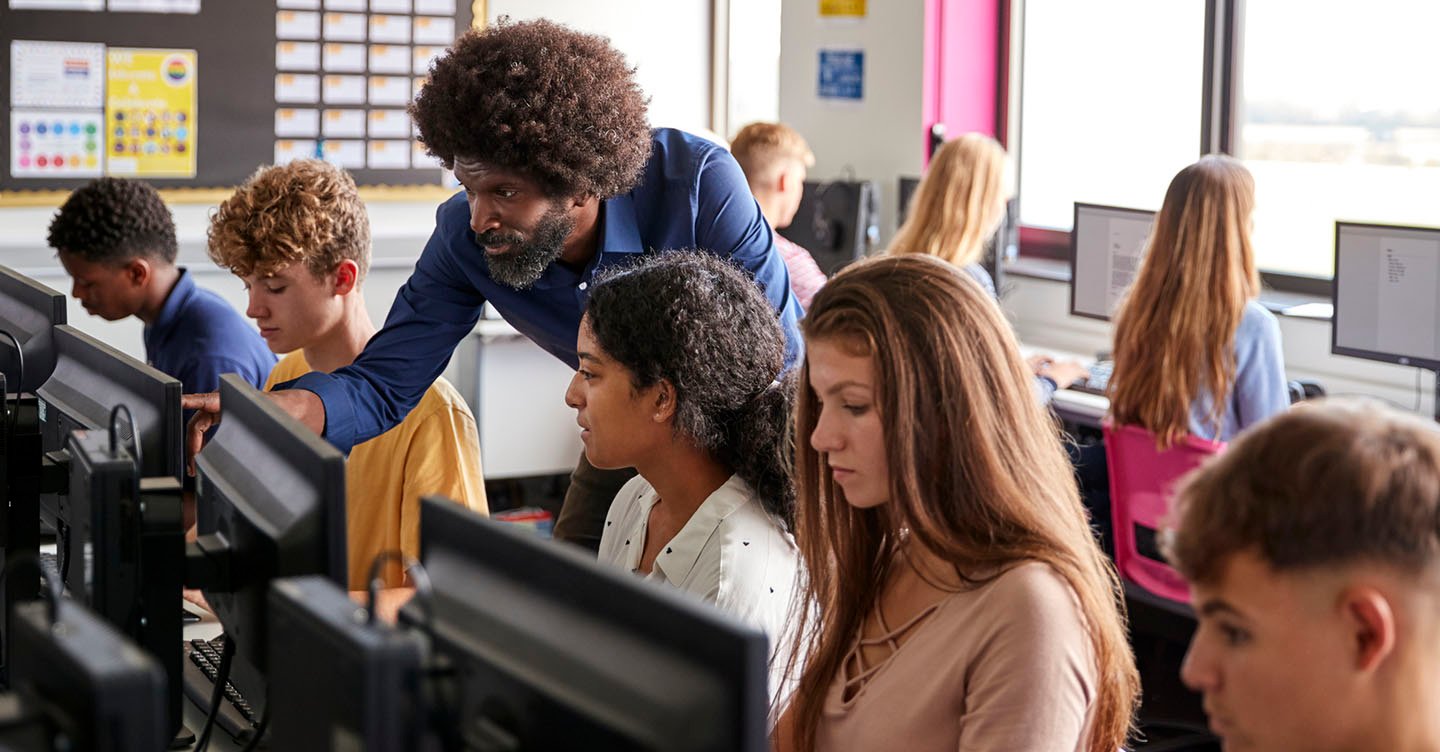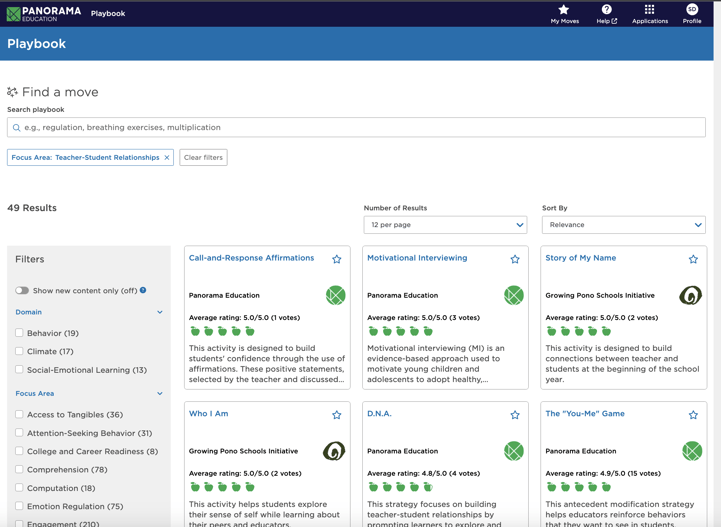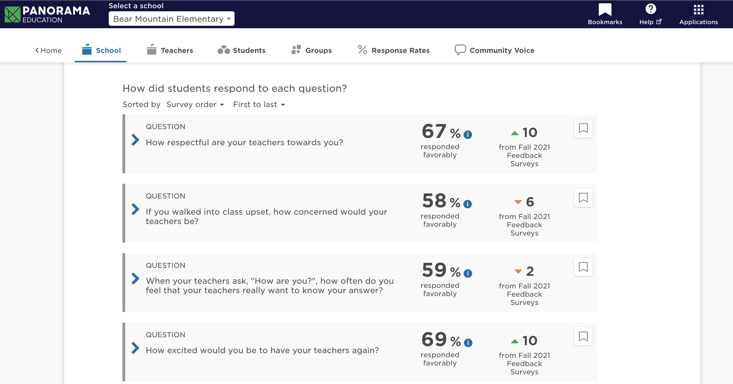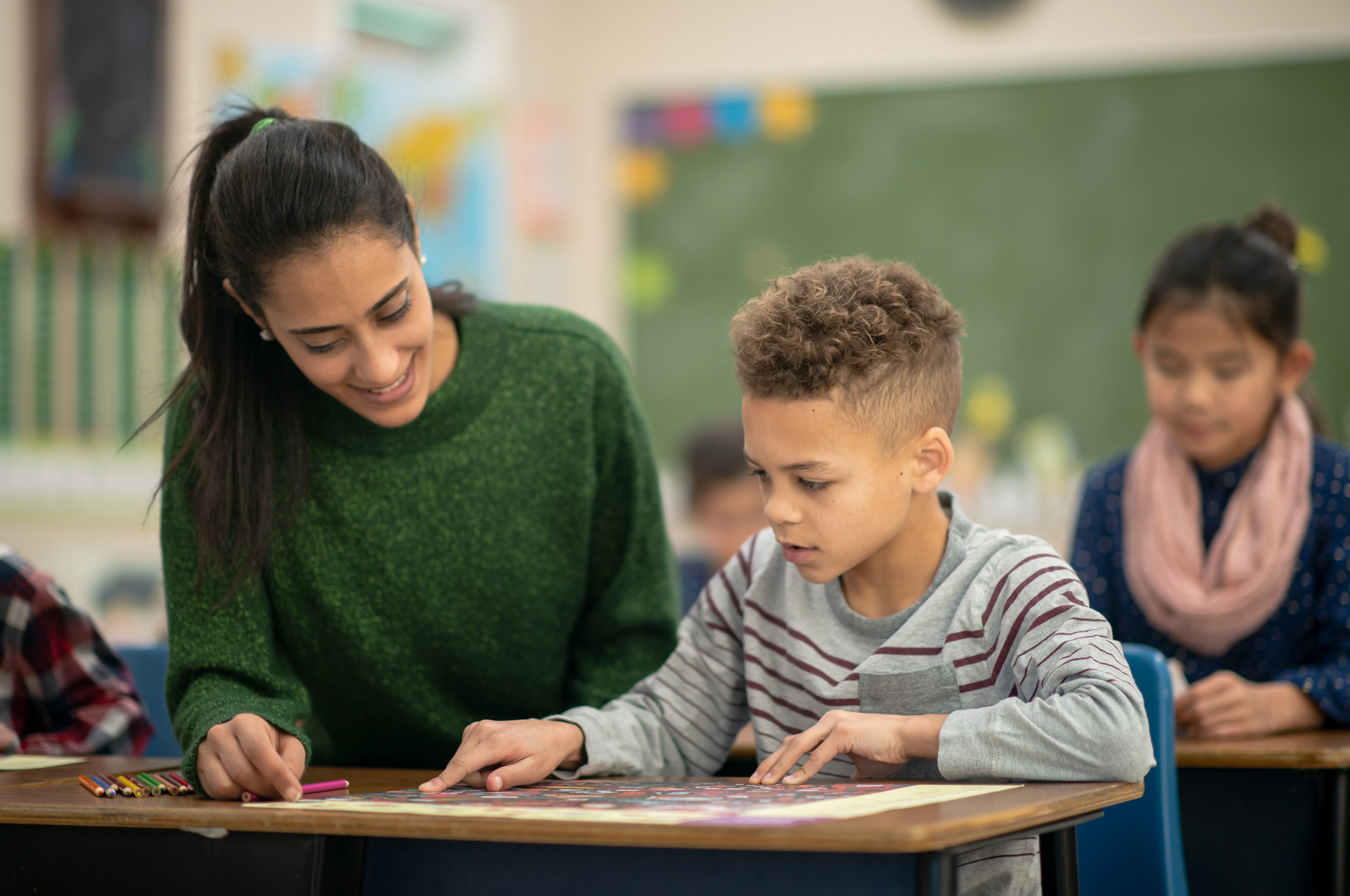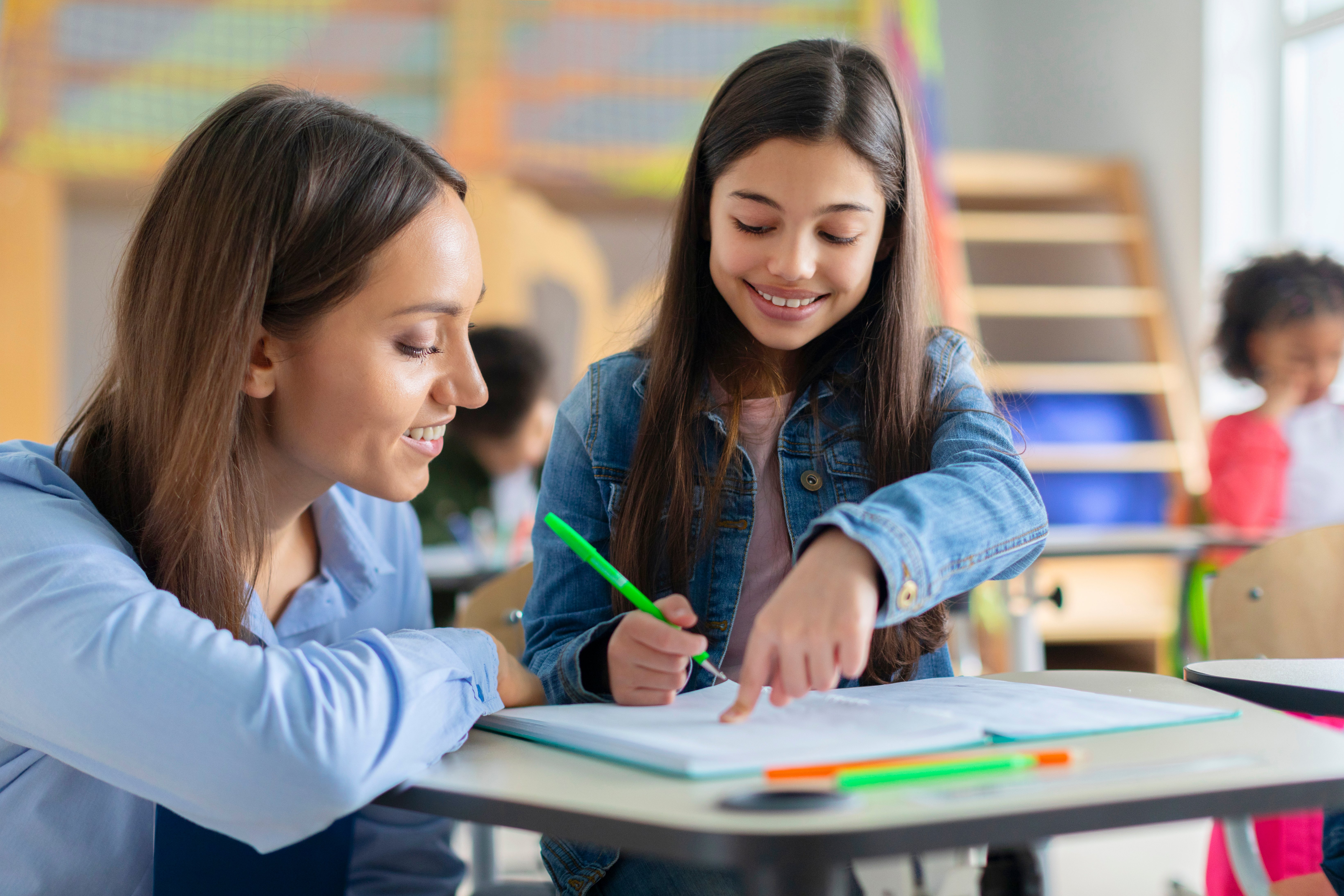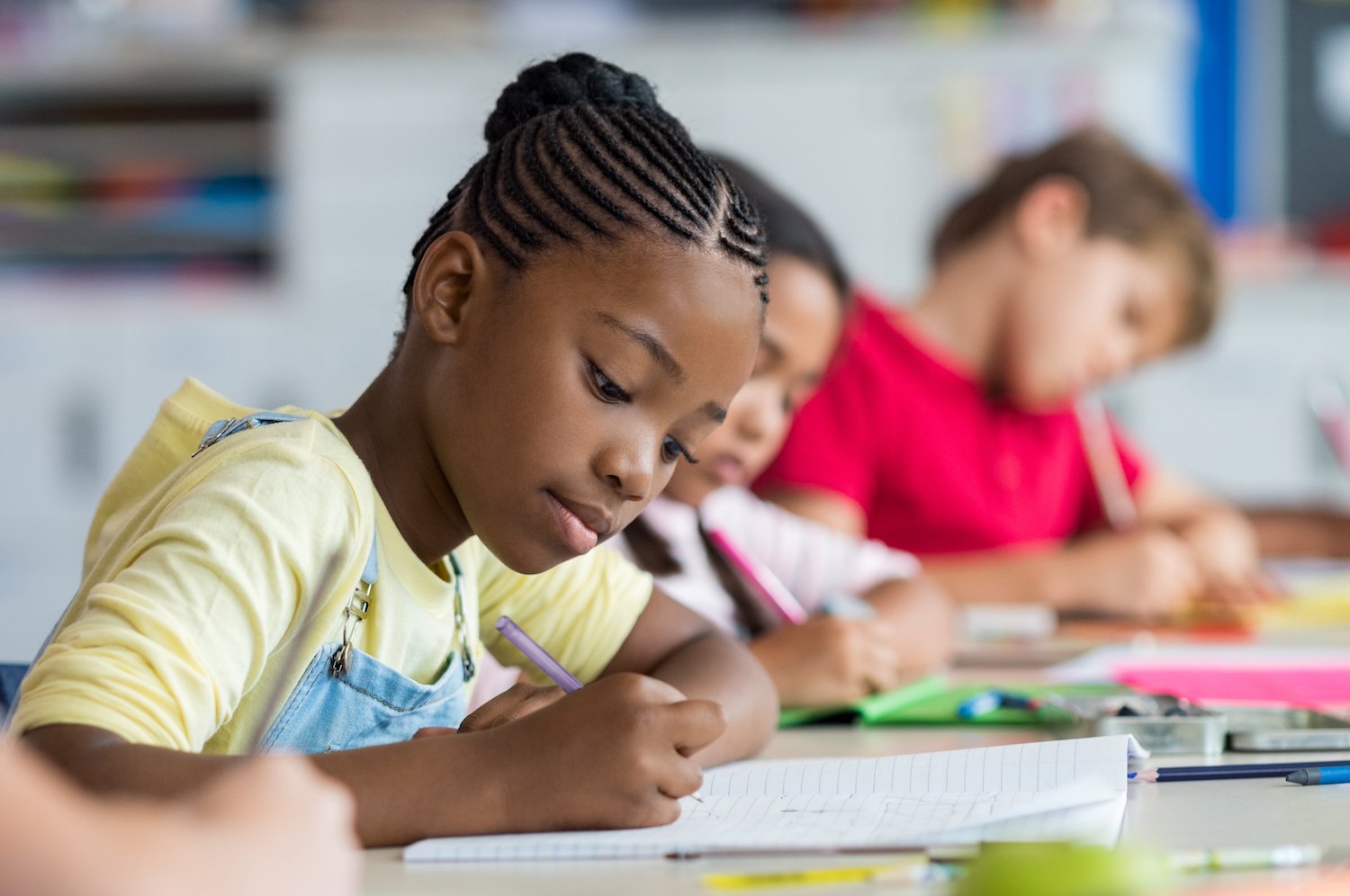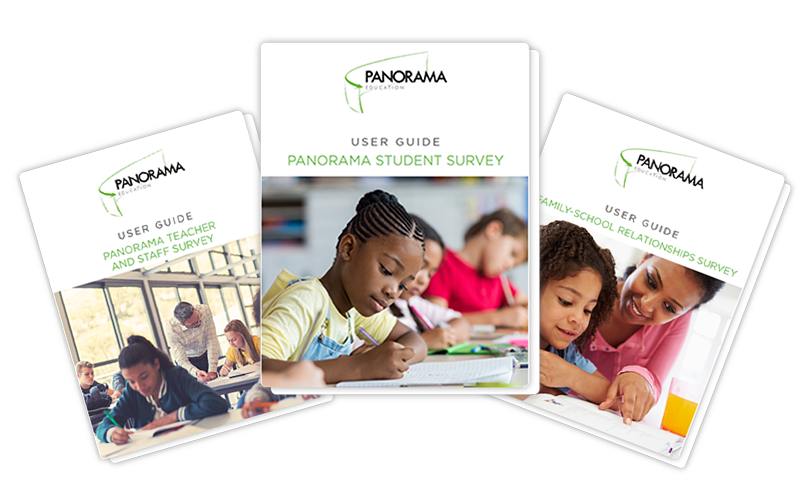Students spend the majority of their weekdays with their classroom teachers. From the moment they arrive at school to the moment they leave, students and teachers are working together in daily partnership. When we focus on building strong teacher-student relationships, both educators and their students succeed.
When teachers create classroom environments built on support and empathy, students feel seen, heard, and cared for. And they are more likely to succeed.
Free Download: Panorama's 360° Surveys Starter Pack
Why Positive Student-Teacher Relationships Matter
Positive student-teacher relationships are tied to student outcomes. Research shows that students who have trusting and supportive relationships with their teachers have higher levels of academic achievement and better behavior than those who do not. Educator and researcher John Hattie reminds us that "It is teachers who have created positive teacher student relationships that are more likely to have the above average effects on student achievement."
Teachers also benefit from having strong relationships with their students. When students are engaged and learning, teachers feel more motivated in their work. These teachers tend to have good relationships with families as well.
Teacher-student relationships are a crucial piece of the school environment. In this article, we share four strategies you can use to foster connections between students and educators in your district or school community.
|
|
Positive Home Contact
Courtesy of GiveThx, featured in Panorama Playbook
Overview: An educator tells a student’s caregiver something that they are grateful to their child for. Expressing thanks for a student's behavior to a caregiver shows that the educator values the student and behavior. This reinforces both the behavior and the relationships between educator, student, and caregiver.
Instructions for Implementation:
- Reflection: Select a student who sometimes struggles with behavior or academics. Think of something they did or a way they behaved that contributed positively to the class.
- Communication: Call, text, or email the student’s caregiver. Share the student’s positive behavior or action in the form of gratitude for what it contributed to the class. Families who often expect critical communication when contacted by the school will be particularly impacted.
Tips:
- Leaving a message / writing an email works just fine. It provides the caregiver with something concrete they can share with their child and refer back to.
- Aim to make this a routine throughout the school year by contacting one student family per day.
|
|
Get-to-Know-You Questions
Overview: For learning to happen, students need to see their identities valued, feel safe physically and emotionally, and feel a sense of connection to peers and adults. Open up space for students to tell their stories, learn about their lives, and create rituals and structures that cultivate belonging and connectedness.
Instructions for Implementation: To help you get to know your students, we've curated a list of asset-based, inclusive questions (you can access the full list here). Most are open-ended questions, but you can also adapt them into a multiple-choice format.
- If you are a district or school administrator focused on improving relationships and belonging campus-wide, we invite you to share this list with your teachers and staff. This is a great resource to include on district or school resource sites, Tier 1 resource hubs, or in staff newsletters.
- If you are a teacher, practitioner, or instructional coach, feel free to borrow these questions to get to know your students in the classroom—virtually or in person! These questions are great for small group brain breaks, icebreaker games, morning meetings or morning circles, and advisory periods. Or, use them as conversation starters in a 1:1 setting.
Sample Questions:
- What is your favorite food?
- If you could be an animal for a day, what would you be and why?
- What are three awesome things about yourself?
- What is something people don’t know about you that you wish they knew?
- What is a unique talent you have?
- How would your friends or a relative describe you?
- What is something that you are thankful for?
- What do you like most about your family?
- What is a family tradition that you have?
- What is the best way I can support you outside of class?
- How would you like to be recognized if you get a good grade on an assignment or project?
- Would you rather live in snow or rain for the rest of your life?
- Would you rather be able to fly or be invisible as a superpower?
- What can teachers or other adults at school do to better support you?
- How included did you feel in class today?
|
|
Social Contract
Courtesy of Character Strong, featured in Panorama Playbook
Overview: Students and teachers will work together to establish an agreed-upon set of classroom values, expectations, and consequences that all students help create and sign. A social contract provides students a voice in how they want the class environment to be and what behaviors it takes to maintain that environment. It also gives the teacher a tool to use when addressing student behavior issues in the class by directing students to their own wishes and commitment for what the ideal class should look like, sound like, and feel like.
Instructions for Implementation:
1. Sharing Context About the Contract (5-10 minutes)
- Share with the class that, because you believe all people in the room should have a voice in how the class functions, you are all going to work together to create a set of classroom expectations.
- Explain that this will become a contract that everyone signs, and that it will be posted up as a reminder of what they created together and agreed to as norms.
- Ask students to individually respond to the following questions. They can use both words as well as images to help paint a picture. Remind students that they need to be realistic when responding because we really want to use their ideas.
- Examples:
- How do you want to be treated in class? What does that look like, sound like, feel like?
- How do you believe I want to be treated as your teacher? What does that look like, sound like, feel like?
- What does the ideal learning environment look like, sound like, feel like?
3. Group Work + Share Out
- Have students share their ideas with each other and see if they can create a single inclusive vision for each question.
- Have groups share out as a class, asking a few students to volunteer to write the key words and phrases on the board.
4. Collaborate to Create the Contract
- Work together as a class to summarize their ideas into a class contract that is posted on the wall
- Have everyone in the class sign it.
Teacher-Student Relationship Surveys
Overview: Students themselves are a critical source of data about the strength of teacher-student relationships. Panorama’s research-backed surveys include a series of questions about Teacher-Student Relationships. This student feedback can provide important insight for schools and districts into how well their teaching staff is supporting student academic and social devleopment.
Instructions for Implementation: On the Panorama Student Survey, Teacher-Student Relationships are assessed with five questions written for older students (grades 6-12) and four questions written for younger students (grades 3-5). These questions together can be used to measure students' perceptions of the strength of their relationships with their teachers in a valid and reliable way.
Sample Teacher-Student Relationship Questions:
- If you walked into class upset, how concerned would your teacher be?
- How excited would you be to have this teacher again?
- How respectful is this teacher towards you?
Educators can use student feedback on these questions to determine if they are creating welcoming classroom environments and a sense of community at school for students.
School and district leaders can also use these surveys to inform broader initiatives. For example, you could decide to focus on relationship-building as a theme in your district. Offer lessons and ideas to your educator teams, and use your student voice survey data to track progress during staff meetings. Learn about how Casa Grande Elementary District (AZ) strengthens teacher-student relationships with Panorama data.
|
Panorama's Student Survey (note that demo data is pictured) |


.jpeg)
